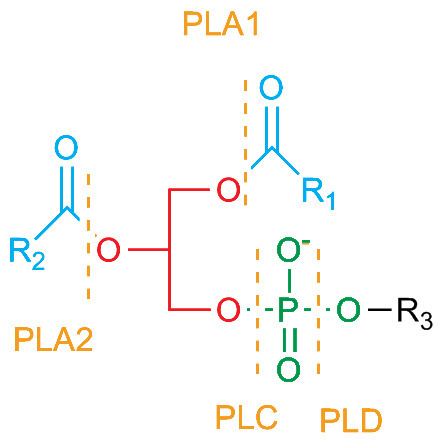 | ||
A phospholipase is an enzyme that hydrolyzes phospholipids into fatty acids and other lipophilic substances. There are four major classes, termed A, B, C and D, distinguished by the type of reaction which they catalyze:
Types C and D are considered phosphodiesterases.
Phospholipase A2 acts on the intact lecithin molecule and hydrolyses the fatty acid esterified to the second carbon atom. The resulting products are lysolecithin and a fatty acid. Phospholipase A2 is an enzyme present in the venom of bees and viper snakes.
References
Phospholipase Wikipedia(Text) CC BY-SA
